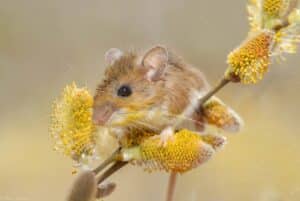Hello, fellow readers. A while back, Kay wrote in response to a column titled Antics of Meadow Wildlife featuring my birder buddy Dennis Briede’s meadow just up the road a piece. Dennis shared there has been a notable decline in butterflies in recent years due to habitat reduction.
Kay wrote, “I always enjoy your posts, calming and reflective. You mentioned the decline in butterflies, and I think light pollution is also a huge contributing factor that should be addressed,” leading to a question about Keeping Lighting Pollinator-Friendly.

Hardscape Design by Sierra Landscape Management. Planting Design by Stone Associates Landscape Design & Consulting.
Kay lives on Weiss Lake in Alabama, a resort community where people flee to experience solace and escape the busyness of urban life. “It never ceases to amaze me that the same people want to bring all their night lighting from the city, destroying the very thing they seek.”
She described her woodland garden with walking trails. “Visitors often tell me that I should add lighting for nighttime walks. After learning of the detriments to pollinators. I decided against it.”
How to Keep Landscape Lighting Pollinator-Friendly

Landscape Design by Mary Stone, Stone Associates, in cooperation with Robert Molinet of Sierra Landscape Management
I reached out to Blaine Rothauser, a new friend Dennis introduced me to, who does moth counts in his meadow. Someday soon, I will experience the magic. Blaine, Technical Specialist at GZA GeoEnvironmental, Inc., is modest about his credentials, which reads like a scientific roster of experience. But one of the things that hit home is he is a specialist in threatened and endangered species, as well as his senior credentials as an ecologist and a wetland specialist.
I asked Blaine about the impacts of lighting on moths, which would be more impacted than butterflies since many are nocturnal.
“In totality. Yes. Lights are a problem for all of Nature’s aspects. Because you think about it, we’ve only had lights for maybe 150 years of our evolutionary existence. You suddenly put artificial lights up, and you can imagine the effects on species that did not evolve with metal halide LEDs. Some of the lights are full spectrum ultraviolet, which overwhelms certain species. It creates a navigational roadblock for species that migrate. They use lights to understand what up and down is.”
“Before artificial lights, there were stars and the moon. Think how faint starlight is, though moonlights are pretty bright. But not comparatively speaking to the lights around them. They never evolved with that type of intensity, so they will tax toward those artificial lights. And then when they get close to, say, our metal halide or white, very bright old spectrum lights with ultraviolet spectrum inside of it, they get confused and start spinning and spinning and exhaust themselves.”

White-footed Mouse Photo by: Blaine Rothauser
Blaine Rothauser is a gifted wildlife photographer generously sharing his Woodcock images in Woodcock Dance and Making a Meadow. After the Spring Unfolding is Happiness piece featuring pussy willows, he sent an adorable photograph of a cute little white-footed mouse sitting on a pussy willow eating the pollen. “Mammals can occasionally pollinate.” I just wanted to kiss the little mouse.
We spoke about many things during our interview, and I look forward to sharing more after our moth count.
“Do you feel that landscape lighting affects pollinators?”
We wrapped up with a touch-back of Kay’s question as landscape lighting is part of the design elements for clients, although I’m not a huge fan of landscape lighting other than for the functional need of walking paths and subtle up-lighting of beautiful plants.
“Have your parties; when you’re done, turn off the lights. Don’t use them as ornamentals when nobody’s around to enjoy them, although it’s hard to convince people. While their intensity uses less energy, LED lights have an ultraviolet spectrum that still can attract insects. It’s when you accumulate lights on top of lights and cities that it is a beacon. As things migrate, that’s when you have a problem.”
That’s good advice, Blaine. Please turn off the lights when you’re not using them.
Blaine shares and sells his photos and articles to whoever wants to learn about the beauty of this incredible state. And I am one of them. Thank you, Blaine, for sharing your knowledge with us. And thank you, Kay, for your question. It’s essential to learn how to use landscape lighting more politely.
Garden Dilemmas? AskMaryStone@gmail.com and your favorite Podcast App.
There’s much more to the story in the Garden Dilemmas Podcast:
Related Stories and Helpful Links:
Blaine Rothauser’s Blogs on Linked In and photos featured in Woodcock Dance and Making a Meadow


